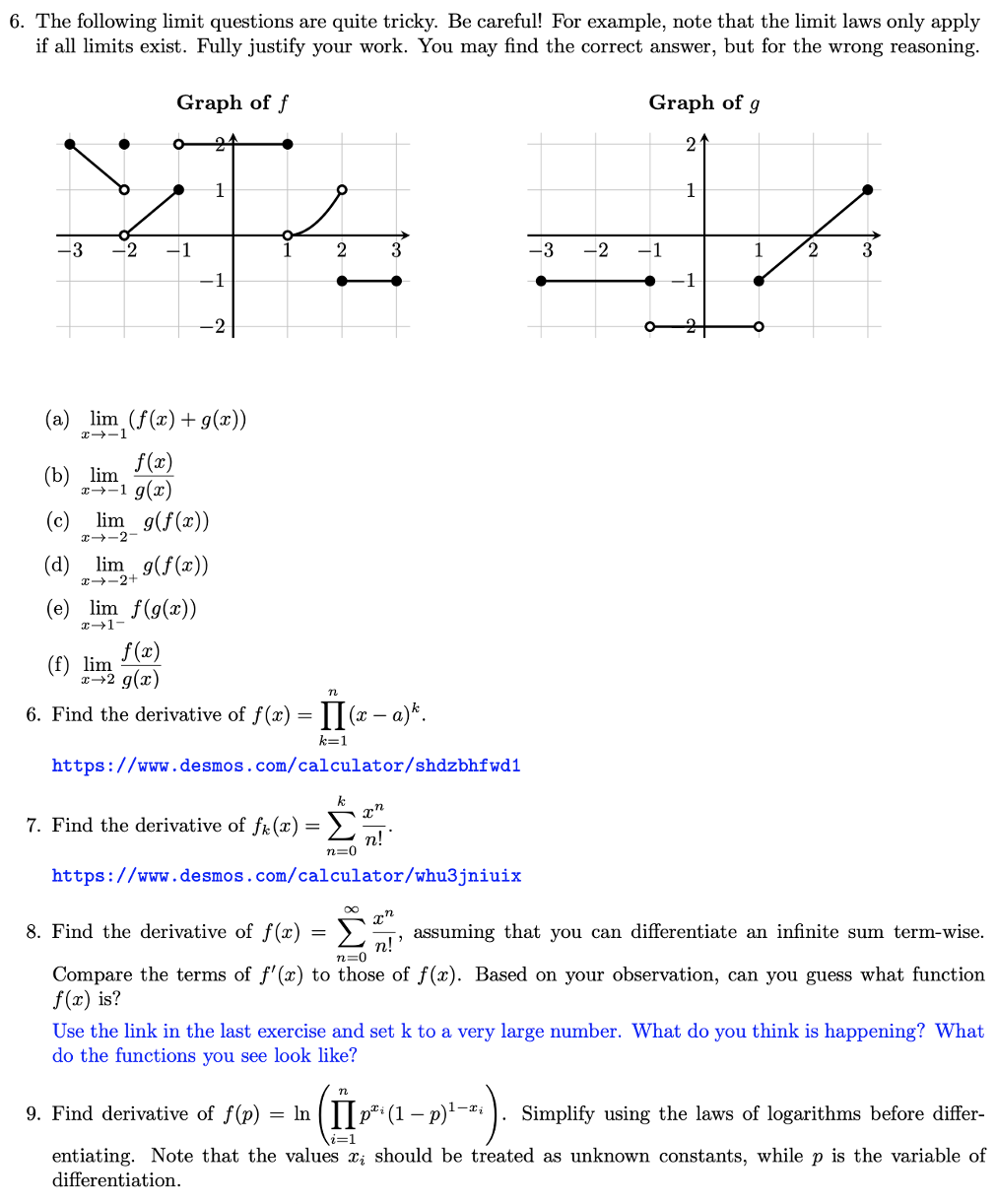Answered step by step
Verified Expert Solution
Question
1 Approved Answer
6. The following limit questions are quite tricky. Be careful! For example, note that the limit laws only apply if all limits exist. Fully

6. The following limit questions are quite tricky. Be careful! For example, note that the limit laws only apply if all limits exist. Fully justify your work. You may find the correct answer, but for the wrong reasoning. Graph of f 1 X4 -3 -2 -1 2 (a) lim (f(x) + g(x)) x-1 f(x) x1 g(x) (b) lim O (c) lim g(f(x)) -7-x (d) lim g(f(x)) x 2+ (e) lim f(g(x)) x-1- f(x) x 2 g(x) (f) lim n 6. Find the derivative of (x) = [[(x a)*. k=1 https://www.desmos.com/calculator/shdzbhfwd1 k xn 7. Find the derivative of f(x) = n! n=0 https://www.desmos.com/calculator/whu3jniuix 3 = 9. Find derivative of f(p) -3 -2 Graph of g 2 11 -1 1 2 8. Find the derivative of f(x) xn n!' n=0 assuming that you can differentiate an infinite sum term-wise. Compare the terms of '(x) to those of f(x). Based on your observation, can you guess what function f(x) is? Use the link in the last exercise and set k to a very large number. What do you think is happening? What do the functions you see look like? 3 n = = ln Ip (1 p)-xi -P)-.). Simplify using the laws of logarithms before differ- entiating. Note that the values x, should be treated as unknown constants, while p is the variable of differentiation. i=1
Step by Step Solution
There are 3 Steps involved in it
Step: 1

Get Instant Access to Expert-Tailored Solutions
See step-by-step solutions with expert insights and AI powered tools for academic success
Step: 2

Step: 3

Ace Your Homework with AI
Get the answers you need in no time with our AI-driven, step-by-step assistance
Get Started


